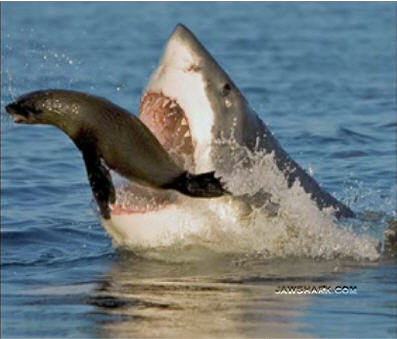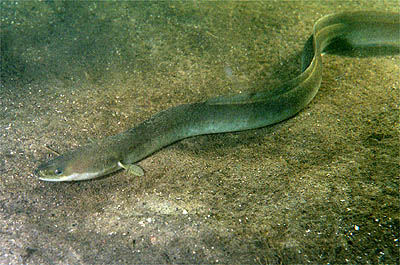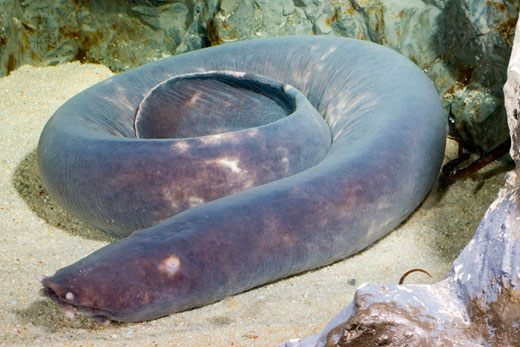Great White Shark
The Great White Shark, also known as the Great White or White Death has obtained it’s dreadful reputation because of it’s striking appearance and massive size. Also, the novel and the film Jaws helped support this image of the Great White as a man-eating predator.
In reality, the stories of this great sea creature hunting for humans are far-fetched. The Great White Shark can be found in almost all coastal waters of the major oceans, except for the very southern or northern seas. These sharks are one of the fiercest and largest predators of the sea, reaching up to an incredible 6 metres in length and more than 2 tons in weight.
The Great White Shark is usually solitary, although pairs have been spotted too. They roam coastal waters rich with possible prey and hunt sea lions, seals and a variety of fish, as well as dolphins or other, smaller sharks. The fact that the only predator of the Great White is a man, is false, as the Orca, who are larger, pose significant threat to the Great White Sharks and observing them has indicated, that the Great Whites will always try to avoid confrontation with the Orca.
The mating habits of the Great White Shark haven’t been fully observed, however it is known that the gestation period lasts for around 11 months. They are vivipary, which means the eggs develop and hatch inside the female. The pups that are still developing feed on unfertilized eggs and smaller siblings, as there is no placenta to feed them. After birth they immediately swim away from the mother and there is no nursing. They become sexually mature in 15 years and can live up to 100 years of age.
A myth that startles many people swimming in the ocean is that a Great White could sneak up at any time and eat a human. Although it is true that these sharks sneak up from below and use a surprise element in their attacks, they would rarely target a human specifically for eating. Being of a curios nature, the Great Whites often swim up to unknown creatures and take a “sample bite”. Although they are definitely a threat to humans, the image of “man-eating killing machine” is nothing but a fairy tale.
The physiology of the Great Whites has not changed for millions of years and they have truly adapted to be a dangerous sea predator and even now, holding them in captivity for observation has proven to be impossible. Very little is known about the status of the Great White Shark and a total population count can only be guessed. They are, however, listed as “Threatened” by the IUCN, as less of these sharks are seen, mostly because they are often targeted for their massive 300-teeth jaws, their fins or meat. Much research is still needed, to find out about the status of the Great Whites.





awsome!